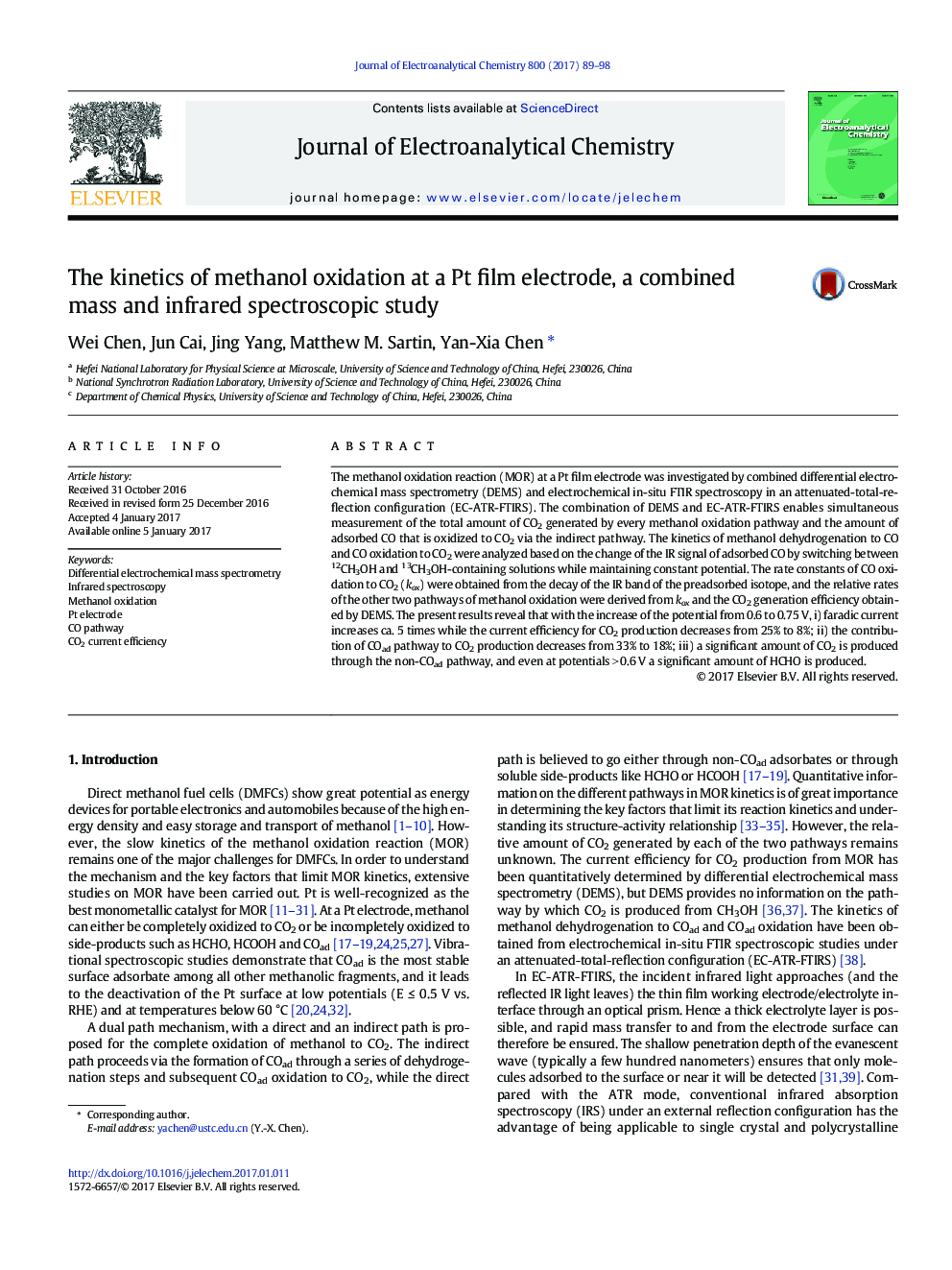| Article ID | Journal | Published Year | Pages | File Type |
|---|---|---|---|---|
| 4907702 | Journal of Electroanalytical Chemistry | 2017 | 10 Pages |
Abstract
The methanol oxidation reaction (MOR) at a Pt film electrode was investigated by combined differential electrochemical mass spectrometry (DEMS) and electrochemical in-situ FTIR spectroscopy in an attenuated-total-reflection configuration (EC-ATR-FTIRS). The combination of DEMS and EC-ATR-FTIRS enables simultaneous measurement of the total amount of CO2 generated by every methanol oxidation pathway and the amount of adsorbed CO that is oxidized to CO2 via the indirect pathway. The kinetics of methanol dehydrogenation to CO and CO oxidation to CO2 were analyzed based on the change of the IR signal of adsorbed CO by switching between 12CH3OH and 13CH3OH-containing solutions while maintaining constant potential. The rate constants of CO oxidation to CO2 (kox) were obtained from the decay of the IR band of the preadsorbed isotope, and the relative rates of the other two pathways of methanol oxidation were derived from kox and the CO2 generation efficiency obtained by DEMS. The present results reveal that with the increase of the potential from 0.6 to 0.75Â V, i) faradic current increases ca. 5 times while the current efficiency for CO2 production decreases from 25% to 8%; ii) the contribution of COad pathway to CO2 production decreases from 33% to 18%; iii) a significant amount of CO2 is produced through the non-COad pathway, and even at potentials >Â 0.6Â V a significant amount of HCHO is produced.
Keywords
Related Topics
Physical Sciences and Engineering
Chemical Engineering
Chemical Engineering (General)
Authors
Wei Chen, Jun Cai, Jing Yang, Matthew M. Sartin, Yan-Xia Chen,
